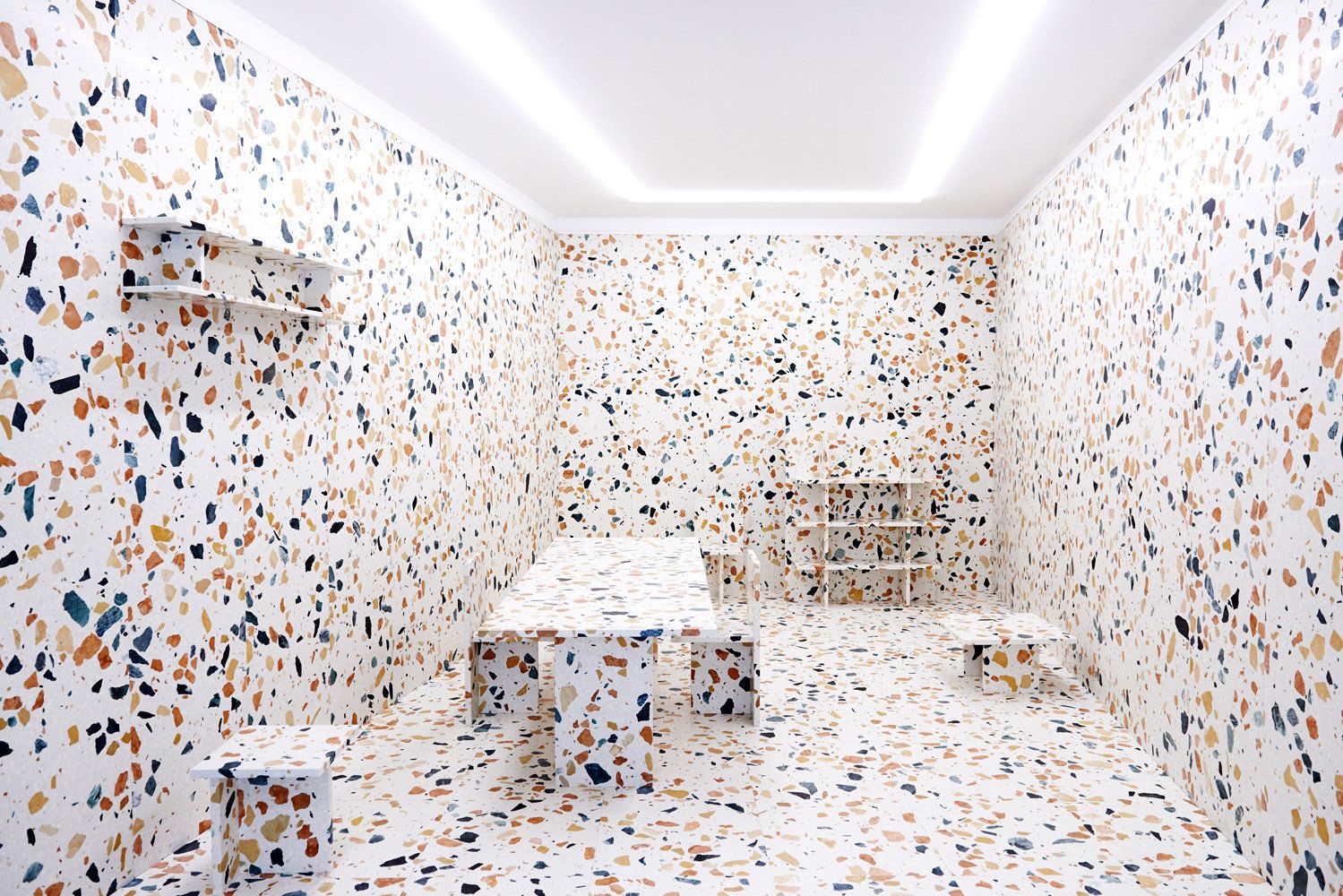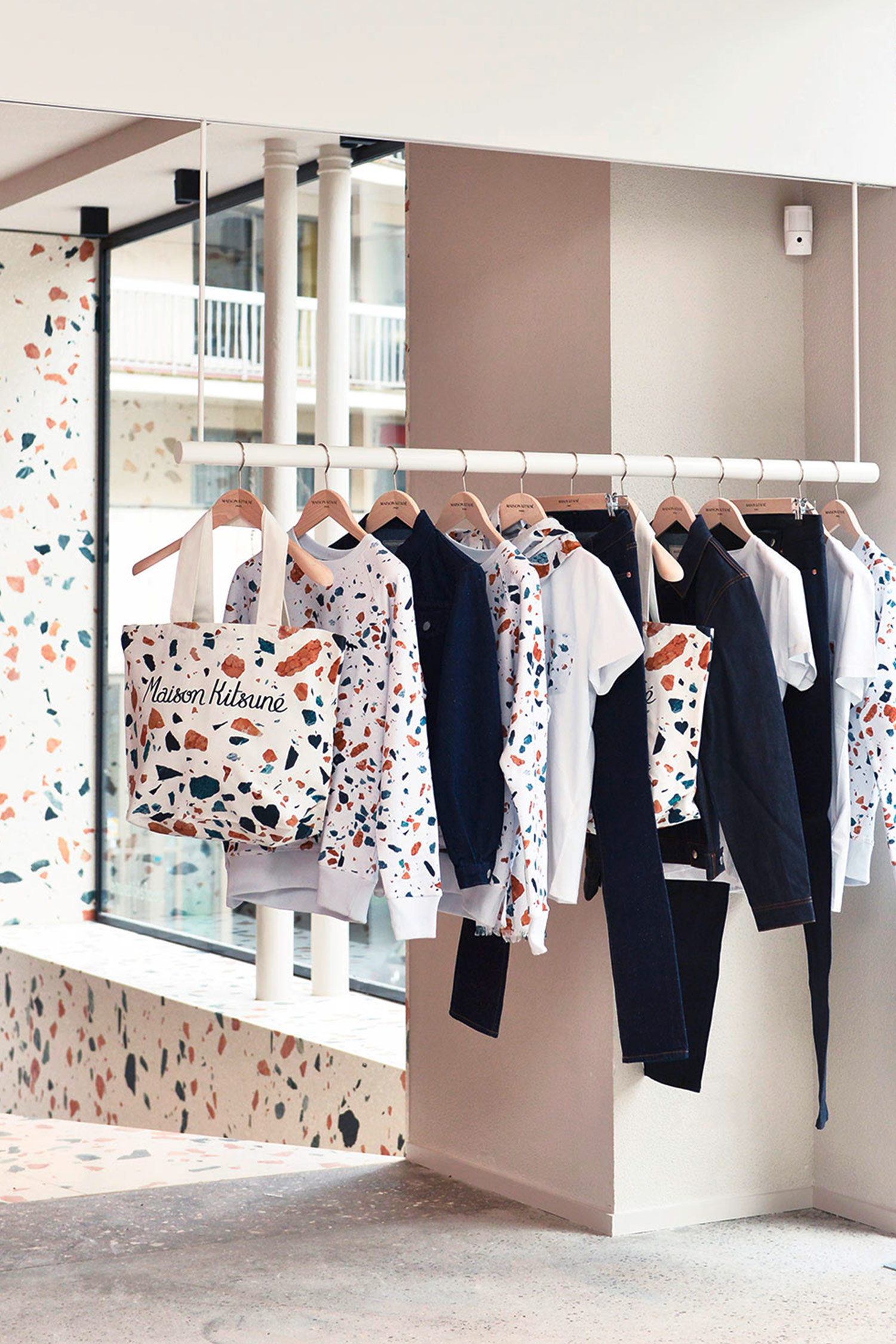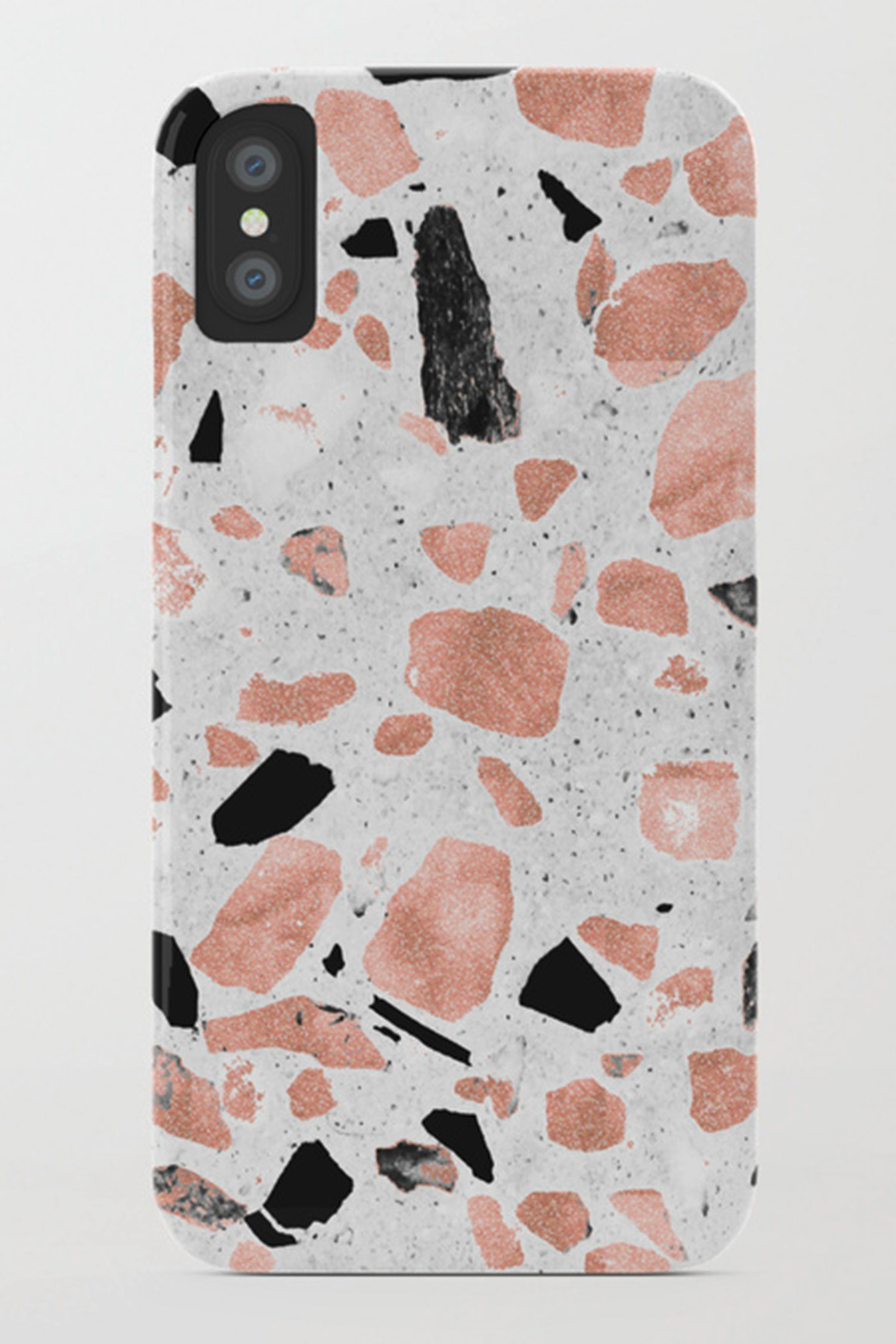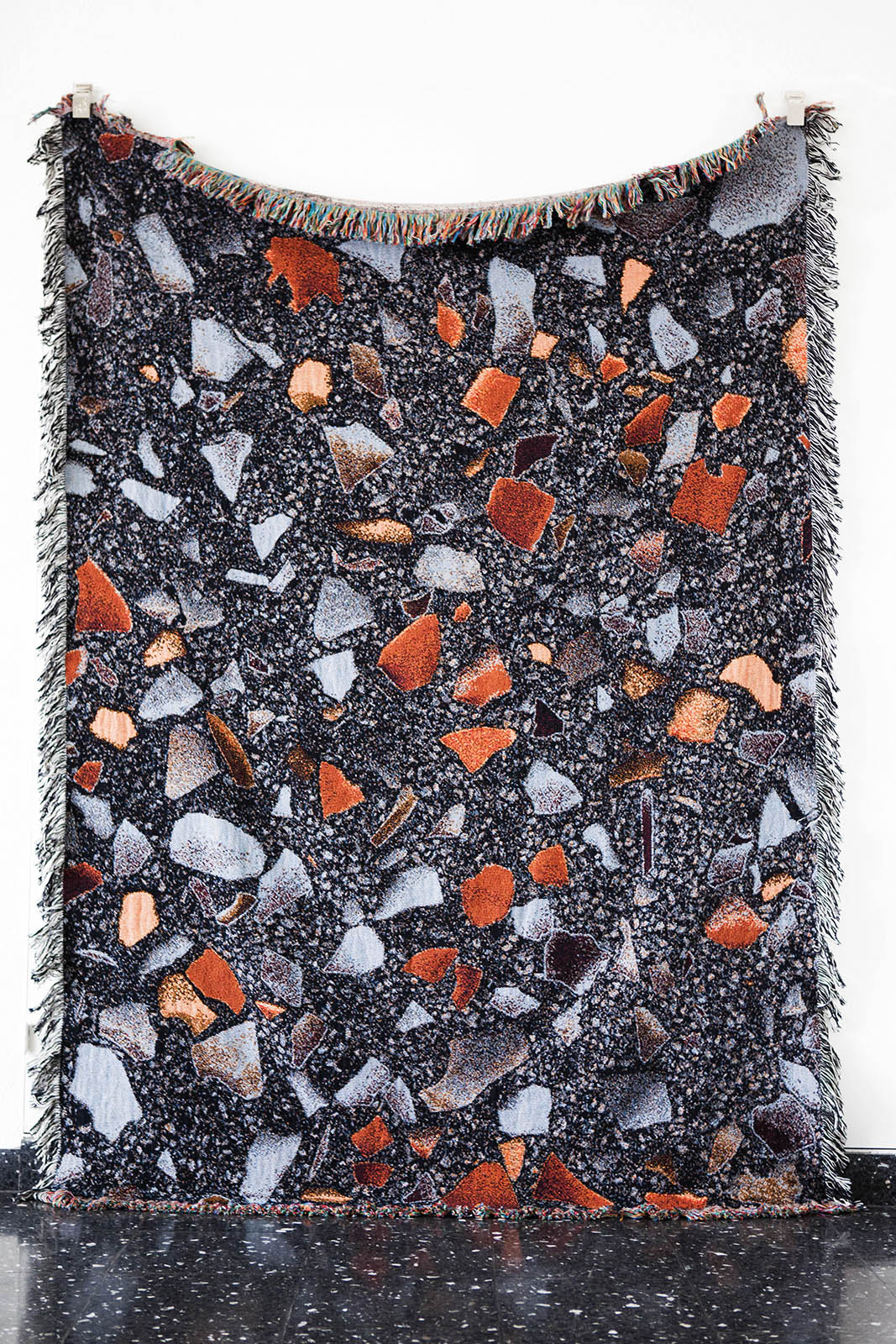«Terrazzo 2.0 –
the symbol of our interdisciplinary social structure»
Design culture
Joan Billing & Samuel Eberli • 23.05.2018
The young design generation was shaped by the virtual world and has neglected the real world along the way. The replacement of the real world with the digital world is becoming increasingly visible. Our interdisciplinary time encourages us to look for new solutions at both a macro as well as a micro level, in other words cross-disciplinary ones. This is how we discovered the spirit and fascination of newly interpreted materials and their combinations. Hybrid combinations have since become commonplace and accompany us at work and in our private lives. The interest of end-consumers in natural, raw and tactile materials such as wood, concrete, leather and stone has now become established. Through all this we are experiencing a renaissance in the use of patterns and materials in design, graphics, architecture, interiors, art and fashion. It’s once again about the nature of the material and the question of how relevant Stone Age knowledge is combined with digital high-tech options. Terrazzo acts as a key symbol in this process and suddenly we are wearing sweatshirts that look like Terrazzo and find it completely normal to walk around as a stone sculpture.
«Timelessly beautiful and modern»
The first golden era of Terrazzo floors was in the magnificent rooms of the Roman Empire. The ancient Romans already liked Terrazzo not only for its beauty, but also because it was hard-wearing and easy to care for. After several hundred years of being forgotten, Terrazzo was re-discovered by the Venetians in the Italian Renaissance because they were looking for a cheaper alternative to marble. They therefore mixed marble offcuts with clay and then smoothed and polished the hardened mixture by hand. Whole churches and palaces gleamed with Terrazzo. Through the beauty of Church architecture, Terrazzo spread throughout the whole of central Europe. The large wave of emigration by Italians to America brought Terrazzo to the rest of the world in the early years of the 18th century. As a result the speckled floor covering was used in the entrance halls and staircases of public buildings or in station concourses, but it also became commonplace for private kitchens and bathrooms. In the 1920s architects used Terrazzo for their breath-taking, opulent and graphic Art Deco style. It was only in the 1960s that it lost its appeal and people started covering and hiding it with carpets or PVC.
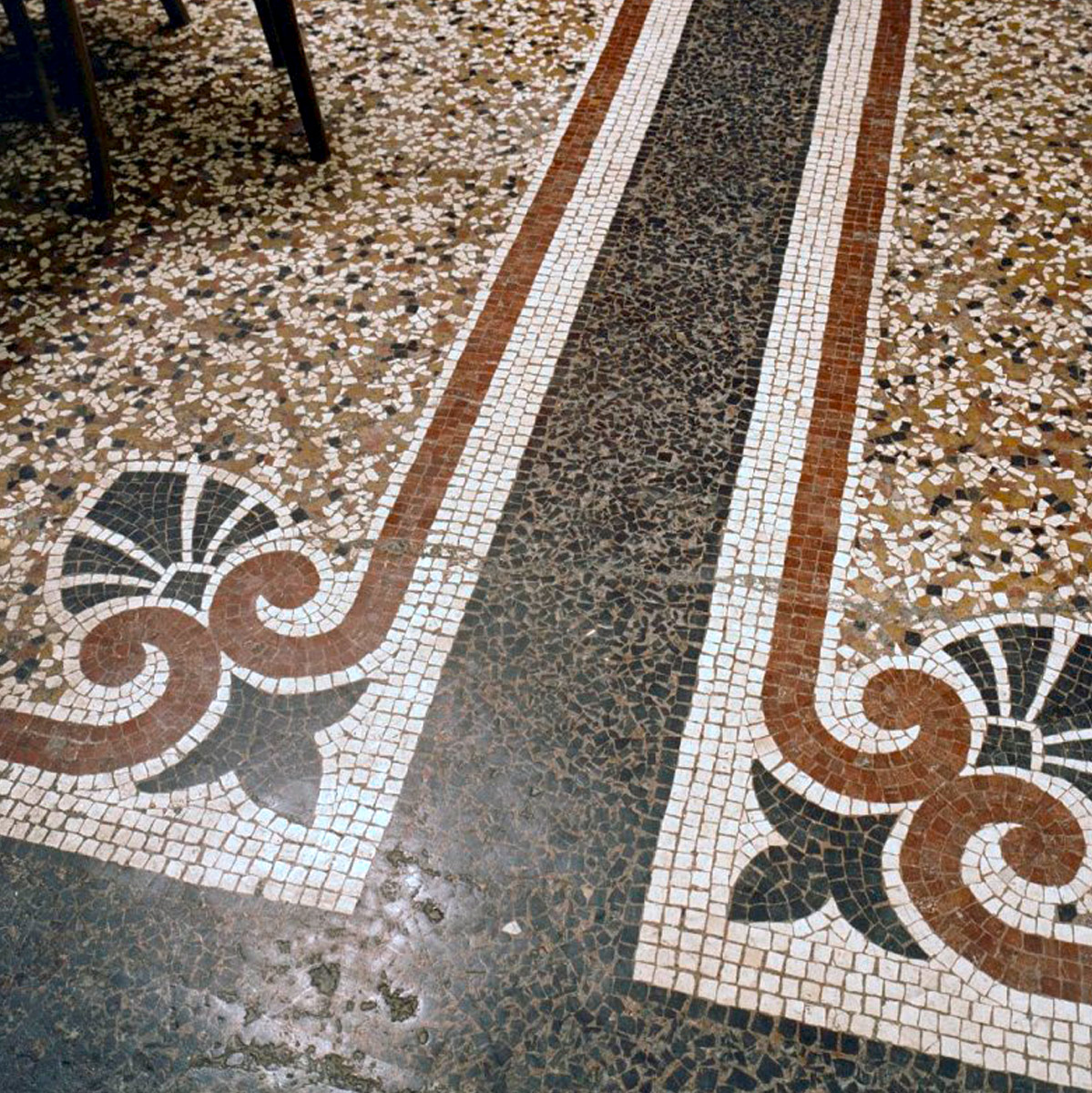
«Back To Memphis – Memphis says hello»
In the 1980s there was another well-deserved turning point. Terrazzo experienced its resurrection and was revealed from under the carpets. The trigger was the Japanese designer Shiro Kuramata, a member of the Italian Memphis design group centred around Ettore Sottsass. He designed the «Nara» table with its visual appearance of colourful splinters of glass on a white background. He called this pattern «Star Piece», which became his trademark. In 1983 he designed the department store in Ginza using the «Star Piece» for the Japanese fashion designer Issey Miyake, with whom he had studied. It was so reduced and puristic that it generated a huge response and it became a milestone in store scenography. The Memphis design group was very smitten with the pattern and developed it further with their new colourful, wild and cheerful design movement. Among other things it used colourful plastic laminate to carry out its act of liberation against the dogma of the modern era. By doing so it turned the entire world upside down and had a formative influence on the 1980s. After Terrazzo had already frequently experienced its heyday, it’s now in vogue again today.
«Terrazzo – The new Stone Age»
Back to the here and now with Terrazzo celebrating a glorious comeback! However, the new Terrazzo image has moved up from the floor. Designers, craftsmen, artists and fashion designers are always discovering new exciting ways of using it because of its age-old aesthetics. It’s now turning up in the strangest places. We can find it as a print on fashion and home accessories such as bomber jackets, jewellery, sunglasses, i-Phone cases, swimming costumes and even on yoga mats and chopping boards. The all-over Terrazzo pattern impresses us on furniture and wallpaper. Carpets, bed linen, packaging, sneakers or cushions also can’t escape the Terrazzo treatment. Terrazzo is also very much in fashion in architecture. Architects in the trendiest hotels and restaurants are using it. One good example is the Hotel National des Arts et Metiers in Paris. Here the bathrooms are decorated in salt and pepper Terrazzo, which extends from the floor via the walls to the shower. It likes to linger there. However, Terrazzo also perfectly complements the current trend in natural materials. The motivation of contemporary designers to work extensively with Terrazzo as a basic material stretches from the archaic investigation of nature to experimenting with new high-tech processing technologies, and in doing so sometimes even the fundamental laws about handling the Terrazzo material are questioned. We will definitely no longer be able to avoid this material in 2018.
«It’s Max Lamb’s fault»
The British Designer Max Lamb clearly kicked-off the phenomenon when he displayed a white furniture series in a room installation at the Milan Furniture Fair in 2014. He developed his own Terrazzo for this called «Marmoreal» together with the company Dzek. The furniture disappeared from sight in the walls made of the same material. It seems as though the spirit of the post-modern era and the department store of Shiro Kuramata were good lessons.
The Japanese-French Maison Kitsuné fashion label became a fan of this room installation. This was how the first «Marmoreal» flagship store came about in Paris in 2014. The Terrazzo pattern then even make it onto the clothing stands and served as the inspiration for the prints on the casual collection, consisting of T-shirts, sweatshirts and bags. Fashion avant-gardists like the Swedish Acne Studio or Carven have adopted the Terrazzo trend in a similar way. And suddenly one comes across the pattern on belts, i-Pad covers, sweatshirts and shoes. The avalanche started rolling and Terrazzo began to spread across the board. In 2014 the star architect David Chipperfield wrapped Valentino’s flagship store in New York in a grey Terrazzo pattern in a grey colour with a sacred effect, which was almost the same as an enlightenment.
In turn, the Femmes Régionales design studio created an unmissable series of office accessories in tired pastel shades with a Terrazzo pattern called «Daily Fiction» for the Danish company Normann Copenhagen in 2016. In 2017 the Italian designer Alberto Bellamoli presented his fascinating new interpretation of the Terrazzo theme at the IMM furniture trade show in Cologne. His Collecta series consisting of side tables, candle holders and bowls displayed a Terrazzo of green marble flecks on a white background or in amber on a black background. Through this he deservedly became one of the nominated talents. But also the innovative Schönstaub design studio from Zurich designed a staggeringly beautiful photo- realistic Terrazzo carpet as well as two cubic side tables, which are devoted to the trompe-l’oeuil appearance of a Terrazzo. These are only a few examples of the Terrazzo hype. Emanating from this the Terrazzo pattern is spreading to almost all sectors, as demonstrated by the packaging of the Gourmand Croquant bar of chocolate made by the French chocolatier Cyril Lignac. It’s really worth letting the wonderfully delicate taste composition with sesame & green tea melt on the tongue. This year we have the opportunity in the relevant department stores of this world to discover the wide range of objects made from Terrazzo.
However, the fragmented pattern on individual pieces with various colours of stone, which still create a whole, is not only the central feature of Terrazzo, but has also become a symbol of our current virtual social structure. Everything is somehow associated with something else. It’s no surprise that young designers and architects are re-discovering it and interpreting it freshly and wildly. They are motivated to breathe new life into the ancient tradition and in this way lead the valuable craft into the 21st century and safeguard it for the next generation.
Photography: Schoenstaub
